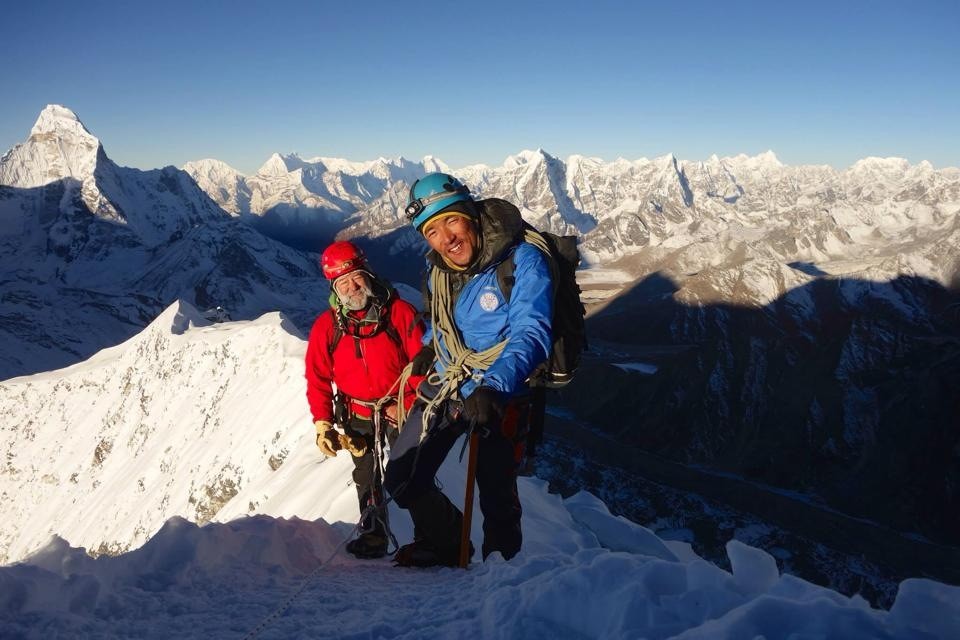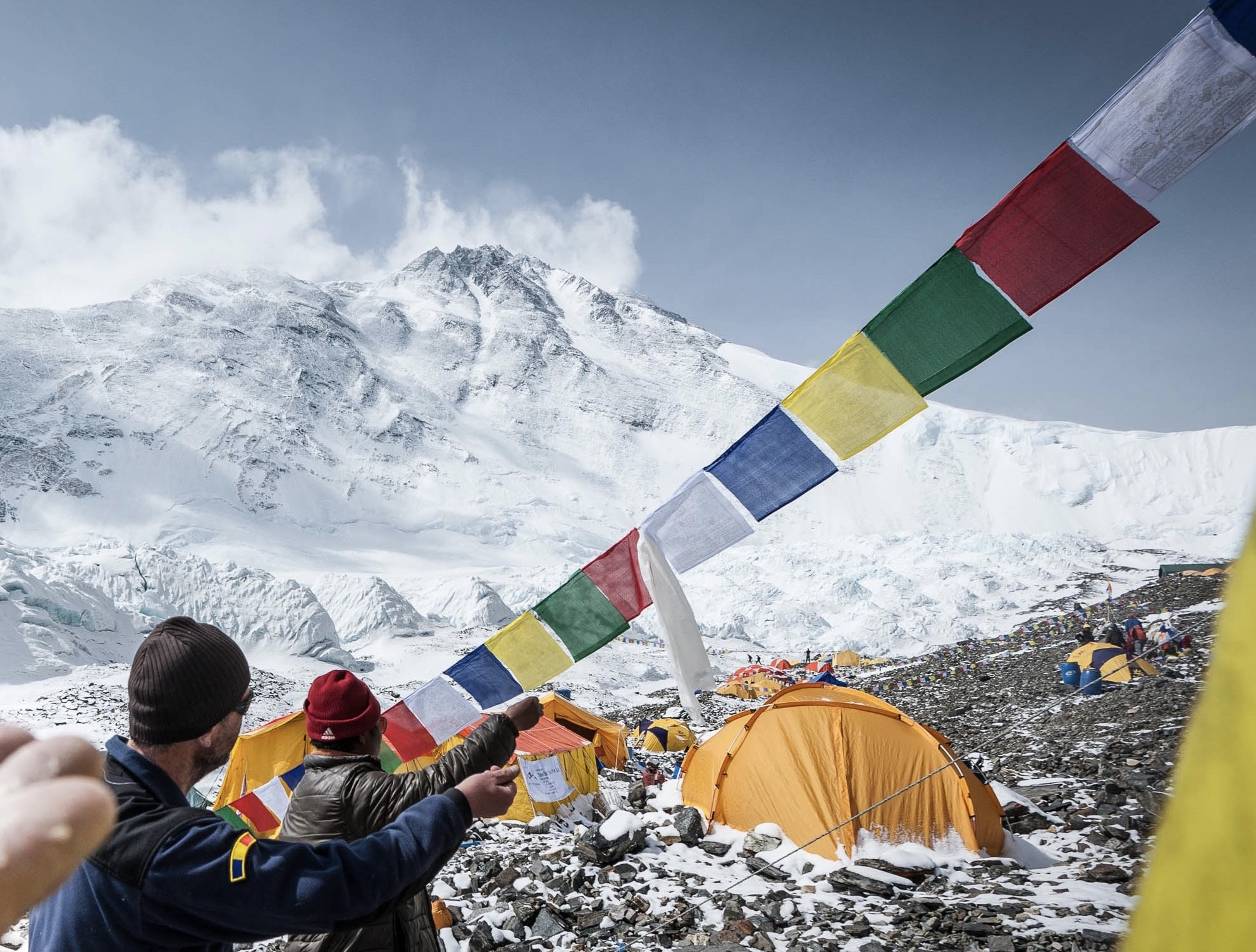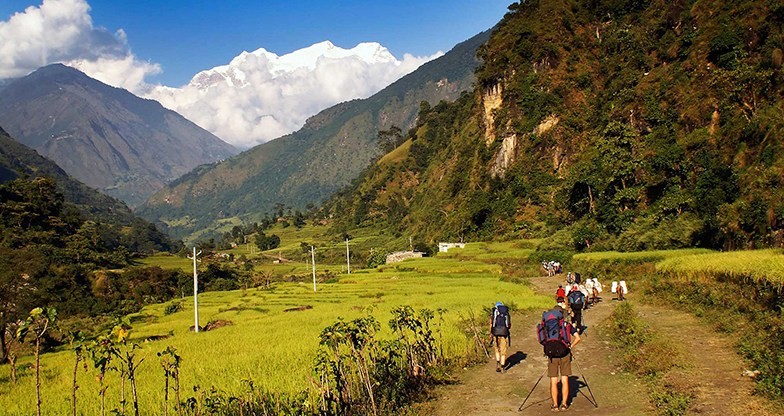

Mount Everest, known to locals as Sagarmatha, is undoubtedly on the bucket list of every climber. Mount Everest is still the ultimate mountaineering adventure. To stand at the pinnacle of the Earth is one of life’s most rewarding experiences. Mt Everest climbing has proved to be a benchmark of climbing achievement. The mountain receives around 1000 summit attempts every year. An attempt on Everest is a committing undertaking that requires a huge amount of dedication and determination.
Ask an adventurer about their dream, they will answer you with a word; EVEREST. Who would not want to reach the top of the world? Who would not want to touch the sky? It’s the trip of the lifetime, It’s Everest Expedition. Who wouldn’t want to conquer the highest mountain on the planet? Reaching the top of the world, exactly 8,848.86m above sea level, is no easy task, but our team will be with you every step of the way – guiding you from the moment you sign up, all the way to the summit and back in a best possible way. If you are serious about achieving the top and feel you have the right ingredients and experience, we invite you to this adventures

Trip Highlight
DAY
1
Upon arrival at the Tribhuvan International Airport in Kathmandu, you will be greeted by our representative who will transfer you to your hotel. You can rest and relax for the day and prepare for the upcoming expedition.
DAY
2
This day is reserved for rest and preparation. You will meet with your expedition team and receive a briefing about the expedition. You will also have time to prepare and purchase any necessary equipment.
DAY
3
After breakfast, you will take a scenic flight from Kathmandu to Lukla, which is the gateway to the Everest region. From Lukla, you will start your trek to Phakding, which is a small village located at an altitude of 2,800m.
DAY
4
The trek from Phakding to Namche Bazaar is a long and challenging one. You will cross several suspension bridges and climb steep hills to reach Namche Bazaar, which is the largest town in the Everest region.
DAY
5
This day is reserved for acclimatization. You can rest and explore the town of Namche Bazaar.
DAY
6
The trek from Namche Bazaar to Dibuche is a gradual ascent through beautiful forests and small villages.
DAY
7
The trek from Dibuche to Dingboche is a challenging one. You will climb steep hills and cross several streams to reach Dingboche, which is a small village located at an altitude of 4,243m.
DAY
8
The trek from Dingboche to Lobuche is a steep ascent through rocky terrain. You will pass by the Khumbu Glacier and reach Lobuche, which is a small village located at an altitude of 4,930m.
DAY
9
The trek from Lobuche to Everest Base Camp is a challenging one. You will cross the Khumbu Glacier and climb steep hills to reach the base camp, which is located at an altitude of 5,364m.
DAY
10-39
During this period, you will undertake rotations to Camp I, Camp II, and Camp III to acclimatize and prepare for the summit push. You will return to the base camp after each rotation.
DAY
40-53
This is the most challenging part of the expedition. You will make the summit push and attempt to reach the summit of Mount Everest, which is located at an altitude of 8,848.86m. You will return to the base camp after the summit push.
DAY
54
This day is reserved for cleaning up the base camp and leaving the area as clean as possible.
DAY
55
After cleaning up the base camp, you will trek back to Pheriche, which is a small village located at an altitude of 4,371m.
DAY
56
You will trek back to Namche Bazaar, where you can rest and celebrate your achievement.
DAY
57
You will trek back to Lukla, where you will spend the night before flying back to Kathmandu.
DAY
58
You will take a scenic flight from Lukla to Kathmandu and transfer to your hotel.
DAY
59
This day is reserved for leisure. You can explore the city of Kathmandu and do some last-minute shopping.
DAY
60
Our representative will transfer you to the Tribhuvan International Airport for your final departure.
Trip Start: 2025-04-12
Trip End: 2025-06-10
spots available
Trip Start: 2025-04-07
Trip End: 2025-06-03
spots available
Having the right equipment on your expedition will make almost as much difference to your safety, comfort, and enjoyment as any physical training you do. It is essential that you take the time to acquire the correct gear; don’t wait for the last minute to find out your local shop doesn’t have your size. This equipment is expensive, but you can often find great sales online and at your local gear store. The purpose of this gear list is to help guide your purchases. Often salespeople in your local shop do not have first hand knowledge of high-altitude climbing, so be sure to balance their advice with what you read here. We have strived to create a list heavy on detail, but there are always further questions!
During your expedition in Nepal you will encounter a very wide range of temperatures and weather conditions. At one end of this range are the pleasantly warm and beautiful lowlands around Lukla, while at the other end of the spectrum is the cold and often windy weather up amongst the glaciers and the highest peaks in the world, before summit day itself. The equipment you
bring must function well in a wide variety of conditions. Your clothing should be warm, lightweight, dry quickly, and allow good freedom of movement. Adhere to the layering principle: several thin layers of insulation (rather than one thick one).
This list is a guide. While you are required to bring everything on this list, there are numerous options, brands, and versions of each piece of equipment, unless otherwise noted. Using our current suggested brand list we encourage you to shop around, do research, even borrow, and use your experience with our list to find the best gear for you.
Purchasing the specific items listed below will ensure you have the right tool for the job, but there are other options on the market.
A note on the packing
For your international 9lights, we recommend that you pack all your
equipment in your two larger duf9le bags. Do not simply pack your
backpack (since the straps can be damaged by the baggage handling
machines). It is important to lock these bags for their trip. Depending
on the airport, you may be able to put your travel locks on after TSA
has searched the bags. If not, lock the bags with zip ties. If the TSA cuts
off the zip tie to search your bag, they will replace it. You will still need
the travel locks to lock your bags in the hotel and during the expedition. Generally, you will take two duffels up to Base Camp, and leave the
third in the hotel in Kathmandu with your belongings for time in the
city. ONE of the duffels going up to Base Camp can be sent on ahead
(with items not needed for the trek in, such as climbing gear) and this
bag will not be seen until we arrive at Base Camp. The other will be
accessible during the trek in the evenings (with items that are needed for
the trek in such as changes of clothing, sleeping bag). SO it’s easy – 1st
bag is with you, the 2nd is ahead going up to BC and the 3rd is left
behind for afterward – 3 duffels!
Body Wear
Head Wear
Hand Wear
Foot Wear
Packs & Bags
Camping Gear
Accessories
Climbing Equipment
Travel Gear
Pack the above items into the following bags ready for your flight to Lukla, trekking and Base Camp.
Kathmandu Duffel Bag
This bag will remain in Kathmandu and contains everything you will not need during the expedition.
Trek Daypack/Daywear
This will be the pack that you carry with you on the plane to Lukla and while on the trek.
Wear your trekking clothes (trekking pants, shirt or long sleeved top and fleece jacket) and boots; pack any spares in your trek duffel. Make sure you have enough clothes with you to keep warm in case you get to the lodge before your porter and trek duffel.
Trek Duffel Bag
This bag contains the items that you will need during the trek. Porters will carry this bag to the lodge that you are staying at each night. You will not have access to this bag during the day
Base Camp Duffel Bag
This bag contains everything that you will need for the climb and Base Camp only. This bag will go directly to Base Camp.
You will not have access to this bag until you arrive at Base Camp.
1
No. All the permits will be arranged by Adventure Sherpa Tracks team after validating a climber’s attempt to climb a definite peak or a route.
2
Yes, insurance is necessary for all our expeditions and trekking. You are responsible for getting the proper insurance for the trip. Please make sure your policy covers medical as well as rescue evacuation costs. You can find more details about insurance in the “Terms & Conditions” section and the “Travel Insurance” section as well.
3
You will need a valid visa to travel to Nepal. You can get a “VISA” to Nepal through the embassy or other diplomatic mission to your country. You can also get a visa at the entry points to Nepal or at the airport. Please make sure that the passport is valid till the expedition ends. You will also be responsible for any kind of visa requirements. And also, do not forget to carry some passport size photos with you while traveling to Nepal.


